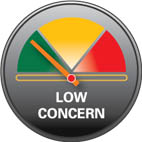Black Vulture
Coragyps atratus
Black Vultures are New World Vultures, with black skin and plumage, except the wingtips, which are white underneath. They also have pale greyish-white legs.
They are highly social, forming flocks to forage and roosting in large groups with several hundred other vultures.
They are classified as “Least Concern” by IUCN, meaning they have high population levels. However, like other scavenging birds, they have been highly affected by lead toxicity. This most commonly occurs when carcasses contain lead due to hunters using lead bullets or buckshot. If the contaminated meat is not removed or covered properly, scavengers may eat it and suffer severe illness or death.
Habitat: Prefer open habitat and avoid dense forests as much as possible. Found in lowlands with adjacent highlands, open fields, desert terrain and urban areas.
Vital Statistics:
–Average weight: 1.8kg
–Average length: 145cm
Life Expectancy:
In the wild up to: 10 years
In captivity up to: 30 years
Diet: Like other vultures they are scavengers, feeding on animal carcasses.
Distribution: Resident in tropical and warm temperate areas from southern Canada to southern South America, including the continental United States.
Conservation: Our related conservation charity is the APCPP- Association for Protection of Condors and Penguins of Peru. This project is based in north west Peru, where our rangers patrol the beaches to reduce pollution and poaching. We also work on reforesting the landscape, and work in collaboration with scientific research projects in the area. This project also works with fishing companies to ensure they rotate their fishing areas, preventing over-fishing and increasing food sources. Finally, we also supplement vultures with food to increase survival rates.


